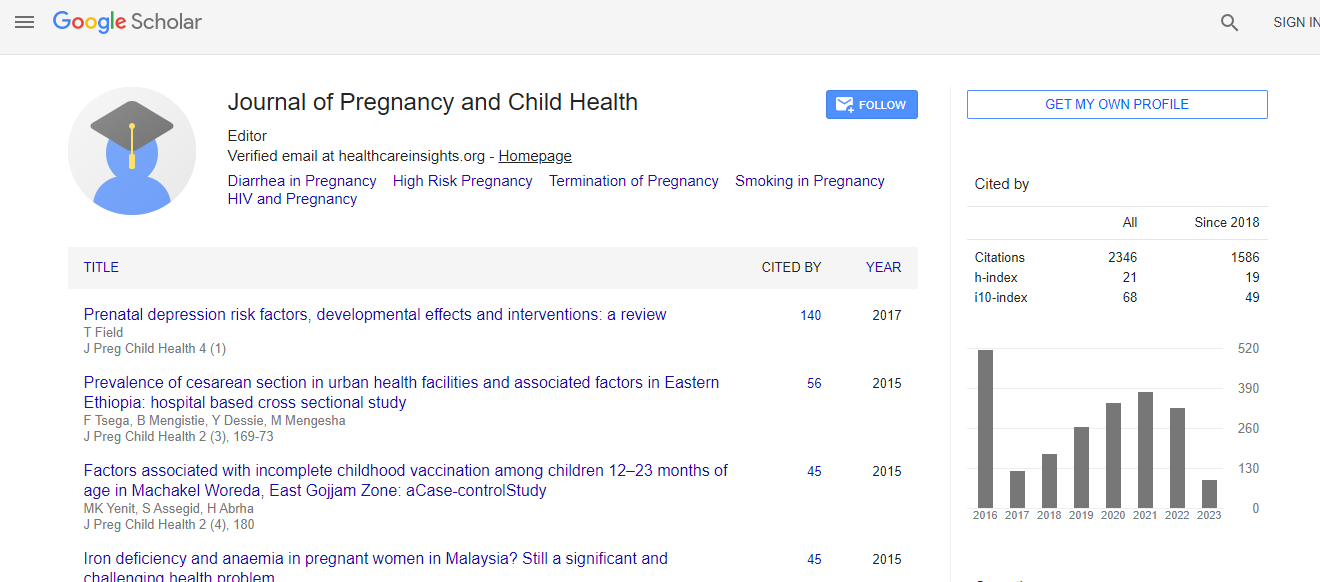Research Article
Does Glycated Haemoglobin Reflect Blood Glucose Levels in Women with Gestational Diabetes?
Vincent W Wong*
Liverpool Diabetes Collaborative Research Unit, Ingham Institute of Applied Medical Science, South Western Sydney Clinical School, University of New South Wales, Australia
- *Corresponding Author:
- Vincent W Wong
Liverpool Diabetes Collaborative Research Unit
Ingham Institute of Applied Medical Science
South Western Sydney Clinical School
University of New South Wales, Australia
Tel: 61287384577
E-mail: Vincent.wong@sswahs.nsw.gov.au
Received date: May 05, 2017; Accepted date: May 16, 2017; Published date: May 21, 2017
Citation: Wong VW (2017) Does Glycated Haemoglobin Reflect Blood Glucose Levels in Women with Gestational Diabetes? J Preg Child Health 4:322. doi:10.4172/2376-127X.1000322
Copyright: © 2017 Wong VW. This is an open-access article distributed under the terms of the Creative Commons Attribution License, which permits unrestricted use, distribution and reproduction in any medium, provided the original author and source are credited
Abstract
Background: The value of performing glycated haemoglobin (HbA1c) at a late stage of pregnancy to assess glycaemic status for women with gestational diabetes (GDM) is unclear, and the correlation between HbA1c and blood glucose level (BGL) in women with GDM is unknown. This study examined the association between 36 week HbA1c and BGL readings from daily blood glucose monitoring over the previous 28 day period. Methods: HbA1c was measured in 120 consecutive women with GDM at 36 week’s gestation and their glycaemic profiles from self-monitoring of BGL in the previous 4 weeks were documented. Results: HbA1c performed at 36 weeks was found to have weak correlation with capillary BGLs: with mean fasting BGL (R2=0.0624, p=0.006) and with mean post-prandial BGL (R2=0.1117, p=0.001) in the prior 28 days. When the 36 week HbA1c was divided into quartiles, women in the higher HbA1c quartiles had greater proportion of their BGLs above 2 sets of treatment targets (target 1: fasting BGL<5.5, 2 h post-prandial BGL<7.0 mmol/L; and target 2: fasting BGL<5.3 mmol/L and 2 h post-prandial BGL<6.7 mmol/L). For women on diet control, the percentage of women with >20% of their BGLs that exceeded treatment targets (which would indicate need for insulin therapy at our institution) increased across HbA1c quartiles in a stepwise fashion. Conclusion: HbA1c will not replace BGL monitoring in women with GDM, but may be a useful supportive tool to assess glycaemic status, especially in women who perform limited BGL monitoring.

 Spanish
Spanish  Chinese
Chinese  Russian
Russian  German
German  French
French  Japanese
Japanese  Portuguese
Portuguese  Hindi
Hindi 
